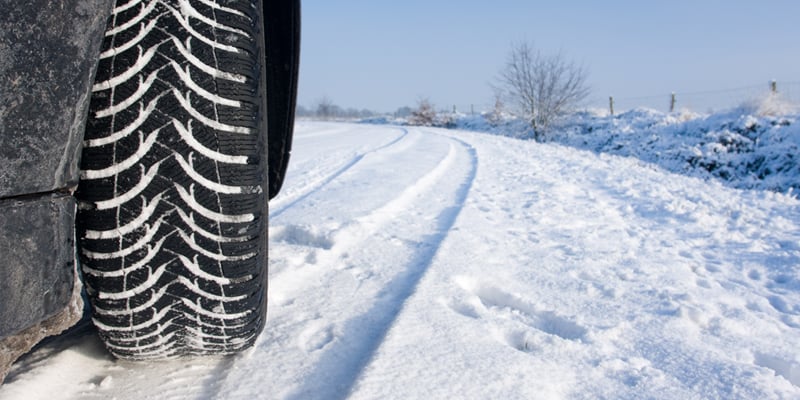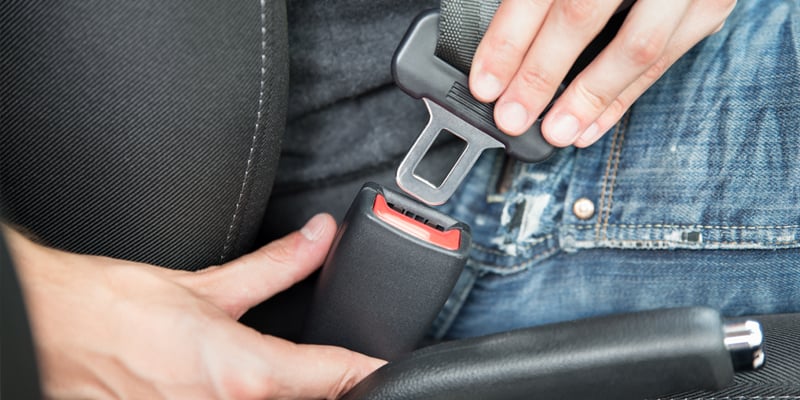
By
Rob Boyle
October 10, 2024
Updated
October 10, 2024

How can I drive safely during winter?
Winter driving can be hazardous and scary, especially in the northern regions that get a lot of snow and ice. It is very important to make proper preparations to help make a safer trip.
Although winter comes as no surprise, many of us are not ready for its arrival. If you are prepared for the hazards of winter, you will be more likely to stay safe and healthy when temperatures start to fall. If you live in cold regions where winter is severe, consider preparing yourself for winter.
When winter weather strikes, you may face challenges as you get behind the wheel. Snow, slush, or icy roads are involved in nearly one in four weather-related vehicle crashes. Those conditions can make it harder for you to see, slow down, and stop - all factors that can increase the chances of an accident.
What are some best practices for driving safely in winter conditions?
Changing weather conditions create different hazards throughout the winter. A single journey may take you into treacherous conditions, extremely cold temperatures, and diverse road and traffic conditions, and you need to be prepared for every situation. It’s good to know what to do if you find yourself stranded in a vehicle. Advanced preparations can help make a trip safer or help you deal with an emergency should it arise.
The 3 P's of Safe Winter Driving
- PREPARE your vehicle
- PROTECT yourself
- PREVENT crashes on the road
1. PREPARE your vehicle
Keep your car maintained:
- Make sure your headlights, rear lights, and interior lights are clean and working properly
- Check your battery and make sure it is fully charged.
- Check the condition of your tires, including tread depth and pressure of all tires, including the spare. Consider snow tires.
- Ensure your brakes are working well, including your brake lights.
- Make sure the windshield wipers and defroster are working to keep your windows clear.
- Keep all fluids topped up to the correct concentration to prevent from freezing,especially antifreeze, windshield wiper fluid , oil and all other fluids.
- Keep your gas tank at least half full to avoid gas line freeze-up

Pack emergency equipment
- Keep bagged salt or sand in the trunk for extra traction and to melt ice.
- Keep a cold-weather kit in your car consisting of a blanket or sleeping bag, gloves, hard candy, bottled water, first aid kit, and a cell phone charger.
- Be sure to always carry a flashlight, jumper cables, abrasive material, a shovel, snow brush and ice scraper, warning devices in the trunk of your car.
- Save numbers for your auto club, insurance agent and towing service in your mobile phone.
Practice winter driving
- Take advantage of the weather before the season changes and practice some safe driving so you are fully prepared when the cold weather comes in.
- Rehearse maneuvers slowly on ice or snow in empty lots during the day.
- Know what your brakes can do and be aware that stopping distances increase on water and ice, so be sure to leave plenty of space between your car and the one in front of you.
2. PROTECT yourself and your passengers
- Clear snow from the top of the car, headlights and windows.
- Drive only if it is absolutely necessary. If you must drive, travel during the day.
- Run the defroster to remove condensation and frost from the windshield and side windows.
- Never warm up your vehicle in an enclosed area, such as a car park/garage, as you can run the risk of carbon monoxide poisoning.
- Always wear your seat belt. Use child safety seats properly. Never place a rear-facing infant seat in front of an air bag. Children 12 and under are much safer in the back seat.
- Use your headlights, even in daylight.
- Don’t travel alone. Keep others informed of your schedule.

3. PREVENT crashes on the road
- Avoid fatigue. Get plenty of rest before your trip, especially if you are travelling long distance. Stop at least every three hours and rotate drivers if possible.
- Stay on main roads and avoid back road shortcuts.
- Leave extra room between your vehicle and the vehicle in front of you. Remember, the larger the vehicle, the longer the stopping distance. You may need TEN TIMES the normal distance for braking in adverse weather.
- Slow down when approaching off-ramps, intersections, bridges, or shady spots.
- If you find yourself behind a snow plow, stay behind it until it is safe to pass. Remember that a snowplow driver has limited field of vision. Stay back at a distance of 15 cars’ length until it is safe to pass.
- Avoid using your parking brake while driving in cold, rainy, and snowy weather. This could cause your tires to lock and your car to slide.
- Do not use cruise control when driving on slippery roads.
- If your car starts to skid, always point your front tires in the direction you want to go.
How can I drive safely in snow or ice and other dangerous conditions?
When driving on snow or ice, accelerate and decelerate slowly. This will allow your tires to retain traction. If you start to skid or slide, apply the gas slowly to re-gain traction.
When driving in rain, remember that rain reduces your ability to see and greatly increases the distance required to slow down and stop.
 Avoid driving in fog unless your journey is necessary.
Avoid driving in fog unless your journey is necessary.
Fog is one of the most dangerous weather conditions.
An accident involving one vehicle can quickly involve many others, especially if they are driving too close to one another.
When driving in strong winds, hold on tight to the steering wheel. A strong gust can snatch the steering wheel from you if you are not paying attention. Avoid bridges wherever possible. Be on the lookout for hazards such as fallen branches, down power lines, debris on the road, etc.
What should I do if I have to drive in cold weather?
Remember, driving in winter weather can be challenging, even for experienced drivers. Slowing down, allowing increased time to come to a stop, wearing your seat belt, devoting your full attention to the road, and being aware of changing conditions can help you drive more safely.
If your travel route task you into remote areas with limited cell phone coverage, consider informing a third party of your travel plans that include your route and when you plan to arrive. This way, if you are overdue, first responders will know where to start looking. If you're unsure whether it is safe to drive, consider waiting until the road conditions improve.
